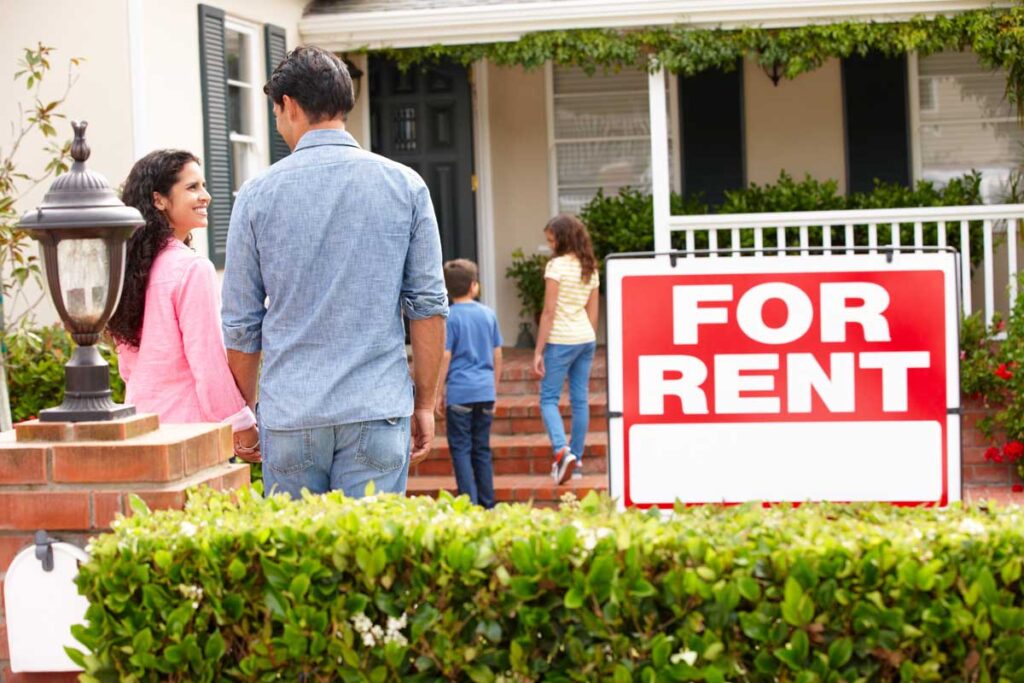What Improvements Should I Make Before I Rent My Home?
This is a very common question that prospective landlords ask as they first start the process of evaluating the readiness of their home to be rented.
Here is the reader’s digest version:
Generally speaking, “You have to do less work than you think.”
- It has to meet the minimum legal safety and habitability guidelines.
- It has to be of minimum market expectations for price.
- Depending on the unit, you can expect improvements to run $2,000-$6,000.
- If you are going high end, expect improvements to be double or triple those numbers.
- If you want to hold the property long-term and make each dollar count the most, go with #3 above and then price the unit appropriately.
- In general, do as little as possible to make the home secure, comfortable, and attractive while remaining at the low end of what is standard in that market.
Typically, we find ourselves in the position of recommending less, not more, when landlords, particularly new ones, ask our advice on how to make the home rental ready.
While most property owners want to get the greatest bang for the buck, it is important to remember:
- If you are going to “invest” in the property via optional improvements/renovation, you need to do the math and be sure it will “pencil out,” which it frequently does not.
- For most properties, the highest rental rate is rarely the way to make the most money over the long-term. It is generally a better strategy to focus on pricing your unit appropriately (or even aggressively) for its relative quality in the market, since it is easier to attract tenants and to retain them.
So start by determining WHAT NEEDS TO BE DONE.
You need to meet the legal safety and habitability guidelines for a property to be considered rentable.
This means that the property must be in livable condition and made reasonably secure.
A brief run-down of how we think about it:
Landlords must provide adequate lock systems (windows and doors) to keep the property safe.
The home’s exterior and roof should be weather proof. The plumbing, gas, and electric must be working. The heater by law (in CA) must be functional and faucets and drains should be in working order. The stairs, railings, decks must be well maintained and avoid obvious safety issues. And any pest issues need to be dealt with before a tenant occupies the property.
Here is a good article which summarizes the basics.
You can always speak to us, your property manager, or consult your attorney to make sure you’re in compliance with what the state requires.
All other work is optional and the rule of thumb is that doing the least work to make the home attractive to tenants is the best investment to make the most money over time.
Not only does more work cost more money, but it takes more time, which leads to longer vacancies and greater dollars in lost rents. On top of that, in mid to lower level market, tenant turnover might occur more quickly. There is no guarantee that improvements will even result in higher rents being achievable.
Every property is different, from age, to neighborhood, to current quality, so the range and cost of a turnover to get your home rent-ready for its optimum (not necessarily highest) price target can vary widely.
Most turn overs include most components of the following list:
• Touch-up or Full Interior Paint (depending on use and length of previous occupancy)
• Blinds & Screens (repairs or replacements)
• Flooring (cleaning or replacement)
• Exterior work (clearing of weeds, tree trimming, etc… )
• Deep Cleaning
• General Handyman Work (caulk around sinks and tubs, smoke alarms, CO2 detector, re-keying, etc… )
Although there are other less routine costs, such as exterior chipping paint or patching a roof, unless the home is damaged or extremely dated, it is rare that we encourage a client to undertake improvement projects. Things like switching from tile to granite counter tops, getting new appliances, or going from vinyl to tile, are not common in typical markets, because these upgrades are pricey and don’t provide a substantial return in the rental rate.
For Example:
Suppose you could maintain the property with minor repairs and upgrades for $5,000.
Alternative, you could make greater improvements and spend $10,000 + an extra week of vacancy, but achieve a rental price of $50 or even $100 more per month.
Even at a $100/mo. Increase in rent, it would take 50 months to recoup the investment, not including the extra week of lost rent to get the work done. In reality, it is unlikely that the rental price would even go up that much for changes in appliances, counter tops, and flooring.
The numbers rarely support expenditures for high end finishes in average neighborhoods.
However, it’s about matching value to expectations for the individual properties. So, if you have a $6,000/per month property, high end finishes, flooring, and other items will be expected and standard in that market, and are justified by the higher rent.
If you have a $1,000/mo. apartment, chances are the finishes will low end and older, but they will be in range with the market’s expectation and standard for that price. That market is unlikely to be willing to pay more for the types of upgrades expected in fancier markets.
Making improvements aimed at maximizing rents is rarely successful. Keeping the average home at the lower end of average condition, meaning more durable and less expensive materials, for its market and pricing it aggressively tends to bring the greatest returns.
I can’t stress this point enough. I have never met a successful real estate investor who doesn’t agree with this—people with 25+ units, or even 5+ units, have learned that low maintenance costs plus long occupancy time pave the road to riches.
If you know a successful real estate investor ($10,000+/mo. of passive income), I would bet my pinky toe that their portfolio consists of “B-” to “C-” units, average to slightly below average on their blocks, (not the worst, but definitely not the nicest).
You can control your turnover expenses, but you cannot control your chances of beating the market (both in terms of rental rate and occupancy times).
Tenants “NEED” rents they can afford, utilities, safety, and functioning home systems.
They “WANT” parking, convenient location, good management, good neighborhoods, and things like nice finishes.
But they can and will forgo those types of things if it means the rent moves up appreciably in markets where tenants don’t have high levels of disposable income.
If your property provides little or nothing from the list of tenant “WANTS”, if it is priced 5% under what equivalent homes on the market are renting for, they’ll typically stay.
If you add finishes or a little remodeling and try to charge 5-10% above market, most would-be tenants are likely to choose another unit, close-by, even if the extras aren’t included, because the extras aren’t a necessity, and they prefer to keep the money.
Shooting for 5-10% over market, on average, you will have shorter occupancy, more turnovers, greater vacancy time and therefore, greater expenses from more turnovers.
Let’s imagine we have 2 investors, similar homes in the same neighborhoods, but –
Investor 1 wants to go for high end finishes and high rental rate.
Investor 2 wants to go for cheap, but durable finishes and a slightly below market rental rate.
We know the average tenancy lasts three years, and for the sake of this example, we will assume both achieve the average of 3 years occupancy (though The Law of Averages tells us that Investor 2 would achieve a longer tenancy than Investor 1 due to rental rate).
If the typical rent for their homes is $2600/mo.
Investor 1 might expect to achieve $2,730/mo. (5% above market) after 5 weeks on market. It will take longer to rent, since tenants who can/will agree to this pricing are harder to find in this market.
Investor 2 will price aggressively at $2,470 (5% under market) and fills it in 3 weeks because of the competitive price.
Investor 1 spent $12,000 to get the property up to his standards. He also missed out on 5 weeks of rent while completing his project and waiting for the right renter at the higher price: ($2,600 x 1.25mo. =) $3,250 in vacancy costs
Investor 1 has a $15,250 total cost.
Investor 2 spent $4,000 and 3 weeks on market ($2,600 x .75mo. =) $1,950 in vacancy cost to rent it.
Investor 2 has a $5,950 total cost.
Investor 1 is making $260/mo. more than Investor 2.
$260/mo x 12 months = $3,120 more than investor 2.
$3,120/year x 3years = $9,360 total earnings for Investor 1 over Investor 2. That is a lot of money in 3 years.
But, let’s check our math.
Investor 1 spent $15,520 to get started.
Investor 2 spent $5,950 to get his property ready.
$15,520 – $5,950 = $9570
Investor 1 spent $9,570 more than Investor 2 and was only able to recoup $9,360 in 3 years.
Investor 2 kept $9,570 more in his pocket from the start and by the end of 3 years was still better off by a few hundred dollars than Investor 1.
Then, in our scenario, the cycle repeats…
Now, we are making assumptions as to the scenario—but it is a good example because it is assuming the best case scenario for Investor 1, and it still doesn’t justify the greater spend. It also ignored the differences from the likely changes to the length of the tenancies, which would have made the point even more dramatically.
Unless you are in a market where high-end and up-to-date are standard, you should probably skip those types of renovations. Even if you ARE in that type of market, it is still worth doing the math before beginning any improvements to make sure the benefits justify the costs, both in terms of expense and vacancy time.
This strategy is the more effective strategy over the long term, not necessarily the short term.
If you own investment properties (specifically multi-families) and you intend to sell in the near future—RAISE THE RENT or START OUT HIGH. Vacancy cost and turnover cost are minimal compared to what happens to your Cap Rate (and therefore sales price) upon a short term sale.
But, if you intend to be a long-term hold person (5 years or more), until you are getting ready to sell, low end finishes, durable choices, and a low (compared to the market) rental rate are how you limit turnovers and turnover costs, create long term tenancies, and achieve highest returns.
If you have questions about a project you are currently working on, looking for some advice on an upcoming turnover or are looking for help managing your property, don’t hesitate to press the “Request A Proposal” button below and we can have a staff member reach out to you to learn more.
Otherwise, if you just have questions or comments, you can do that below or email me directly at parker@tenantplanet.com
Best,
Pedro





